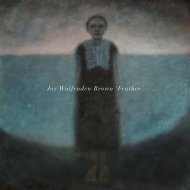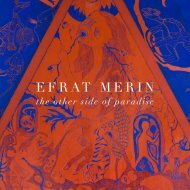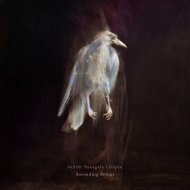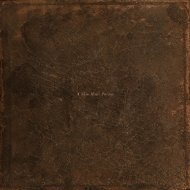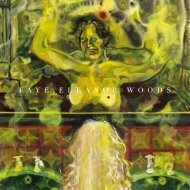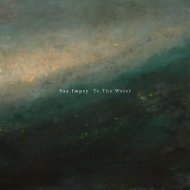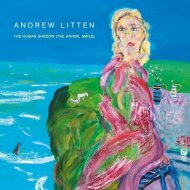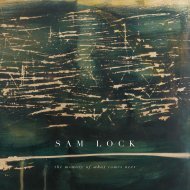Litha
Fully illustrated for the international online 'Wheel of the Year' exhibition 'Litha' at animamundigallery.com
Fully illustrated for the international online 'Wheel of the Year' exhibition 'Litha' at animamundigallery.com
You also want an ePaper? Increase the reach of your titles
YUMPU automatically turns print PDFs into web optimized ePapers that Google loves.
Litha
In many traditions, time is considered to be cyclical
rather than straight line. Perceived as a perpetual
cycle of growth and retreat tied to the Sun’s annual
death and rebirth. This cycle is also viewed as a
micro and macrocosm of broader life cycles in an
immeasurable series of rotations composing the
Universe. The days that fall on the landmarks of the
yearly cycle traditionally mark the beginnings and
middle-points of the four seasons.
‘Litha’ is the seventh in an evolving series of Anima
Mundi online mixed exhibitions following this
rhythm of the seasons, known as ‘the wheel of the
year’. This ‘calendar’ provides a cue for the duration
of each show, and inevitably flavours the selection
of works presented.
2
“My soul is in the sky.”
William Shakespeare, A Midsummer Nights Dream
3
4
Mat Chivers (b. 1988)
“As a child I learnt somewhere that swifts
sleep in the air. They lock their wings
and spiral down, waking before they hit
the ground. I’ve held a kind of nearmystical
reverence for them ever since. I’ve
day-dreamt for hours imagining their epic
migration route from the summer skies of
North-Western Europe to the plains of sub-
Saharan Africa - my mind travelling with
them. Because of their incredible speed and
the fact that they rarely land, they’re quite
hard to observe, so I’ve probably spent more
time experiencing the associations than the
birds themselves. This swift was found the
other side of the Atlantic in the car park of
a Metro supermarket in Montreal. It would
have probably overwintered in Peru if it’s
journey turned out differently. Holding its
body in the palm of my hand I can sense
its absolute stillness. A delicate memory
of airborne freedom. A beautiful vessel.”
The work of British artist Mat Chivers looks
at some of the fundamental phenomena that
drive our thoughts and actions. He explores
ideas relating to perception, evolutionary
process, ecology and ethics by bringing
traditional analogue approaches to making
into counterpoint with state of the art
digital technologies. Chivers has works in
numerous private and public collections
including Oxford University Mathematical
Institute, UK and Fondazione Henraux,
Italy. Solo exhibitions include ‘Migrations’
at Arsenal Art Contemporain Montréal,
Canada and Musée d’art de Joliette, Canada;
‘Harmonic Distortion’ at PM/AM, London,
UK, ‘Altered State’s at Hallmark House,
Johannesburg, South Africa and ‘Syzygy’ at
Anima Mundi. Group exhibitions include The
New States of Being at Centre d’Exposition
de l’Université de Montréal, Canada; A Place
In Time at Nirox, Johannesburg, South
Africa; Glasstress: White Light/White Heat
at Pallazzo Cavalli Franchetti for the 55th
Venice Biennale, Italy and The Knowledge at
The Gervasuti Foundation for the 54th Venice
Biennale, Italy.
Where Do I End and You Begin (Swift)
pencil on paper, 56 x 76 cm
5
Alban Roinard (b. 1979)
Alban Roinard was born in Paris and
currently lives and works in St Ives,
Cornwall. his practice draws specifically
from close contact with landscape and
community. He is a film maker and
photographer and founded Eia Films and
St Ives TV where he regularly documents
the achievements and challenges of the
town at a time of unprecedented change.
He has twice been nominated for the
Celtic Media Festival Awards and worked as
cinematographer on the war documentaries
’The Americans in the Bulge’ and ‘Road
to Victory’.
Rapture
(music by Jamie Mills), single channel video, duration 00:05:17
6
7
8
Luke Frost (b. 1976)
Luke Frost is a British abstract painter
living and working in West Cornwall.
Despite his notable heritage, as Son of
the English painter Anthony Frost and
the Grandson of the celebrated Modernist
painter Sir Terry Frost, his paintings could
be seen to instead echo a formality found in
1960s American hard-edge, post-painterly,
abstraction. However Frost has developed
his own means of exploring complex
colour relationships, be they harmonious
or provocative, and their impact on their
surroundings alongside an internal and
more contemplative space.
Frost began exhibiting in 2003 following
studies at Falmouth and Bath Schools
of Art. His work was featured in ‘Art
Now Cornwall’ at Tate St Ives in 2007
and in 2008 he was awarded a Tate St
Ives artist in residency during which
time he worked at Porthmeor Studio No.
5, formerly occupied by Ben Nicholson
and Patrick Heron. His solo exhibition
‘Paintings in Five Dimensions’ was shown
at Tate St Ives in 2009. He has since
exhibited in Cornwall, London and USA,
with essays written on his work by Matthew
Collings, Tony Godfrey and Michael Klein.
Yellow Volts
acrylic on canvas, 61 x 107 x 107 cm
9
Tim Shaw (b. 1964)
Tim Shaw RA’s sculpture is often dualistic,
incorporating current affairs, societal
complexity and human conflict with
ancient, mythical, metaphysical and primal
concerns. Shaw’s powerful oeuvre connects
these elements to create wider, timeless
portraits of humanity. The tension between
ancient past and a prosaic presence,
between solidity and breakdown, becomes
an organic part of his worldview, whether
he’s looking at human transgression or the
enlightenment of primitive ritual.
Shaw is a British artist, born in Belfast, he
currently lives in Cornwall. He was elected
an Academician at The Royal Academy
in 2013 and made a Fellow of The Royal
British Society of Sculptors and a Fellow
of Falmouth University the same year.
Shaw has had a number of significant solo
shows throughout the UK, Ireland and
internationally. Most recently the major
public solo exhibitions ‘What Remains’
and ‘Something is Not Quite Right’ a
collaboration between The Exchange and
Anima-Mundi, ‘Mother the Air is Blue,
The Air is Dangerous’ was held in the F.E
McWilliam Gallery in Northern Ireland,
‘Black Smoke Rising’ toured from Mac
Birmingham to Aberystwyth Arts Centre
and Back From the Front presents: Shock
and Awe – Contemporary Artists at War
and Peace at the Royal West of England
Academy. He has undertaken a number of
public commissions including ‘The Rites
of Dionysus’ for The Eden Project, ‘The
Minotaur’ for The Royal Opera House and
‘The Drummer’ for Lemon Quay, Truro.
A more political side to his work became
evident in a number of sculptures responding
to the issues of terrorism and The Iraq War.
‘Tank on Fire’ was awarded the selectors
prize at the inaugural Threadneedle Prize
in 2008 and the installation ‘Casting a
Dark Democracy’ was reviewed in 2008
by Jackie Wullschlager of The Financial
Times as ‘The most politically charged
yet poetically resonant new work on show
in London’. Shaw has been supported by
the Kappatos Athens Art Residency, The
Kenneth Armitage Foundation, The British
School of Athens,The Delfina Studio Trust
through residencies in Greece, Spain and a
fellowship in London. Most recently as an
Artist Fellow at the Kate Hamburger Centre
for Advance Study in the Humanities of
‘Law and Culture’ In Bonn, Germany where
he began work on ’The Birth of Breakdown
Clown’ an existential sculptural work
utilising sculpture, robotics and AI.
The Bringers of Light (III)
bronze (edition of 8), 13 x 35 x 10 cm
10
11
12
Sam Lock (b. 1973)
Sam Lock’s considered and expressive,
often large scale, abstract paintings embrace
the principle that change is a process not
an event. A meditation on the continual
flow and movement both around us and
within us inspires each gesture. They are
not made with a system or fixed process
but through an energy that embraces both
change and chance, in a manner that is
both organic and unscripted, following its
own path until there is a balance between
presence and absence. There are silences
and hiding places that are both poetic and
activating, and a physicality and immediacy,
where his aim to ‘submit’ himself to the
canvas, eliminates extraneous thought in
order to guarantee a purity of response.
A response arising through concentration
and intuition where thought and action, go
hand-in-hand. This is what Lock refers to
as the ‘poetry of moments’, of the spiritual
nature of now becoming then, and how
what started as waves of actions, becomes
a forest of memory. Lock is interested
in marks, resulting in paintings, that
communicate both instantly and slowly - to
slow down perception, and to create forms
that don’t reveal themselves fully, all at
once, through a filling up and emptying
of space and surface; traces and echoes
exist in a palimpsest, a build-up of painted
marks, layers and statements that conceal
and reveal, where time becomes held in
a concrete way and the painting achieves
a physical weight and substance. These
layers allow you to swim in and out of the
painting, they lead back in time, retaining
a mystery and dynamism of the moment
rather than a recollection of a misty
lost past.
Sam Lock was born in London and now
lives and works near Brighton with his
studio in a converted industrial unit further
up the coast. Lock studied at Edinburgh
College of Art and Edinburgh University,
graduating in 1997 with MA’s in both Fine
Art and Art History. During his training,
he won a scholarship to travel to Rome,
and explore the relationship between
history, archaeology and the processes
of painting, a preoccupation which still
forms the conceptual basis that underpins
his practice.
Green Stripe / Overhead
mixed media on panel, 25 x 20 cm each
13
Joy Wolfenden Brown (b. 1961)
Joy Wolfenden Brown’s intimate oil
paintings feel hauntingly familiar
possessing a raw, emotional, honesty. She
captures fleeting fragments of memory,
moments in time where the inherent
vulnerability of the figures depicted, often
in isolation, is palpable. These are lovingly
yet spontaneously executed reflections
on the human condition, which have an
unnervingly, yet simultaneously comforting,
unguarded quality.
Joy Wolfenden Brown is a British artist born
in Stamford, Lincolnshire. She currently
lives in Bude, North Cornwall. She graduated
from Leeds University then completed a
post-graduate diploma in Art Therapy at
Hertfordshire College of Art & Design
which she worked as an for ten years before
moving to Cornwall in 1999. Since then
she has had numerous solo exhibitions and
was the First Prize Winner in The National
Open Art Competition, 2012. She was also
awarded the Somerville Gallery painting
prize in 2003 and first prize winner at the
Sherborne Open in 2007 and the Revolver
Pricze at The RWA in 2019. Works were
acquired by the Anthony Pettullo Outsider
Art Collection in Milwaukee with further
works held in collections worldwide.
Float
oil on paper, 18 x 45 cm
14
15
16
Simon Averill (b. 1961)
Albert Einstein’s ‘spooky action at a
distance’ theory referred to the subject of
‘quantum entanglement’. This principle
has inspired this ongoing series of paired
paintings by Simon Averill. Quantum
entanglement is a physical phenomenon
which occurs when pairs or groups of
particles are generated, interact, or share
spatial proximity in ways such that the
quantum state of each particle cannot be
described independently of the state of
the other(s), even when the particles are
separated by a large distance—instead, a
quantum state must be described for the
system as a whole. Physicist and feminist
theorist Karen Barad coined the term
‘intra-action’ to describe the concept of
‘entanglement’, (not only of fundamental
particles but of all material, matter, of nature
and of meaning). There is a distinction to be
made between intra-action and interaction;
when bodies interact they retain a degree
of independence, each entity existed before
the encounter. When intra-action occurs
individuals materialise and agency emerges
from within the relationship not outside of
it. These works further enhance Averill’s
reputation for attempting to record elusive,
transitory yet fundamental phenomena.
Produced through a multi layered, process
of glazing where methodical and repetitive
series’ of motifs, are used to describe
intangible potentials.
Simon Averill is a British artist born in
Brighton, England in 1961. He currently
lives and works near Marazion in West
Cornwall. Averill studied Fine Art
at Brighton Polytechnic and graduated
with Honours. In 1986 he established a
Printmaking Workshop near Penzance,
Cornwall, which he ran until 1990. He
has been a member of the Newlyn Society
of Artists since the late 1980s. Averill
has exhibited widely with exhibitions in
the UK, Europe and USA including the
Royal Academy of Arts Summer Show,
The Discerning Eye exhibition at the Mall
Galleries, Royal West of England Academy
in Bristol, Sherborne House, Plymouth
Museum, Plymouth Arts Centre, Truro
Museum, Falmouth Art Gallery, Newlyn Art
Gallery and the Festival Hall in Chicago,
USA. He has had 12 exhibitions and
won the Wells Art Contempory painting
prize in 2020.
Entanglements
acrylic on panel, 40 x 40 cm each
17
Rebecca Harper (b. 1989)
Much of Rebecca Harper’s work has revealed
itself through a diasporic consciousness
which can often involve a multiplicity of
belonging and a sense of difference, often
one of ‘otherness’ and displacement. The
identity of the displaced positioning is a
paradox between location and dislocation,
out of place everywhere and not completely
anywhere. Generally, the work frames
expressions of ‘being’ and manifests itself
within an unfolding, wondering, allegoric
commentary on the locations that she
inhabits and those which inhabit her.
Recent work explores a cast of reoccurring
characters that rotate around the outskirts
of the house that she grew up in, where
she also found herself locked down during
Covid. This work is a part of a body of work
that acknowledges the human and worldly
capacity to live at the edge of the precipice.
The characters are never seen as portraits
as such, more like actors that play a role,
filling in for particular people, as they fill
a stage. As Rebecca says of the figure who
resembles herself; “It feels like perhaps this
woman, has almost become a guiding spirit
of myself, one of vulnerability and strength
in the dealings of uncertainty, instability
loss, and grief. She shows up reliably again
and again during terrible turbulence.”
Harper was born in London in 1989,
where she continues to live and work. She
studied at UWE Bristol then The Royal
Drawing School and Turps Art School
(Postgraduate’s). Rebecca was Artist in
Residence at The Santozium Museum,
Santorini, in summer 2019, and Artist in
Residence for the Ryder Project Space at
A.P.T Studios, Deptford in 2018-19 before
becoming a studio and committee Member
in 2019. She was winner of the ACS Studio
Prize in 2018. Chameleon, her debut solo
show at Anima Mundi met with great
acclaim including a review in the FT by
Jackie Wullshlager. Most recently Rebecca
was selected for The John Moore’s Painting
Prize 2021, and previously selected for
Bloomberg New Contemporaries in 2018 at
South London Gallery, Other curated shows
include Huxley Parlour, Public Gallery, The
Royal Academy Summer Show, Christies
London and NYC, Flowers Gallery’, Paul
Stolper Gallery, Turps Art Gallery and
Arusha Gallery. Her work is on long term
display in the Albright Collection at
Maddox Street Club in London curated
by Beth Greenacre and at the Santozeum
Museum in Santorini. Harper is represented
in many public and private collections
internationally including the Ullens and
the Royal Collections.
Camouflage at the Edge
acrylic on unprimed canvas, 80 x 80 cm
18
19
20
Stuart Pearson Wright (b. 1975)
Stuart Pearson Wright drew from an early
age and after considering becoming an
actor, finally opted for art school. He
studied at the Slade School of Fine Art
in London. During his time at the Slade,
Pearson Wright won a travel award from
the National Portrait Gallery as part of
its 1998 BP Portrait Awards. He drove
around Britain in a van, producing sketches
and paintings as he went. The resulting
exhibition at the National Portrait Gallery
was called From Eastbourne to Edinburgh:
A Painter’s Odyssey. Godfrey Barker in the
Evening Standard labelled the artist “A
Hogarth for our Times” and Brian Sewell
described the paintings as “images of such
eccentricity and even madness that they fit
perfectly the English tradition of the odd
man out: the Blake, Spencer, Cecil Collins
line, and the largest of them should at
once have been bought by the Tate.” In
2000 Pearson Wright won the BP Portrait
Prize at the National Portrait Gallery,
London. The National Portrait Gallery
subsequently acquired paintings of John
Hurt, Adam Cooper and J.K. Rowling, plus
a series of drawings which were displayed
in 2006’s Most People are Other People.
Stuart Pearson Wright lives and works in
Suffolk, UK and is represented by Flowers.
Zakynthos
glazed vulcan stoneware on slate, 28 x 40 x 23 cm
21
Paul Benney (b. 1959)
Paul Benney was born in London and
currently lives and works in Suffolk. He rose
to international prominence as a member of
the Soho and East Village Neo-Expressionist
group, whilst living and working in New
York City in the 1980s where he worked and
exhibited alongside peers Marylyn Minter,
Jean-Michel Basquiat and David Wojnarovicz
among the many other others who made
up the exploding NY art scene. Despite
living and working in this extraordinary
creative environment Benney’s painting
maintained a uniquely English sensibility.
Collections including the Metropolitan
Museum of Art in New York, The Brooklyn
Museum, The National Gallery of Australia
and The National Portrait Gallery in London,
The Royal Collection and The Eli Broad
Foundation own works. He has exhibited
in eight BP Portrait Award Exhibitions and
twice won the BP Visitors’ Choice Award.
Benney’s portrait subjects have included HM
Queen Elizabeth II, Sir Mick Jagger, John
Paul Getty III, 7th Marquess of Bath, The
State Portrait for Israel, Lord Rothschild,
as well as Ben Barnes for the portrait in
the feature film ‘A Portrait of Dorian Grey’.
Benney was invited to be resident artist
at Somerset House in 2010. During his
five year residency he held the exhibition
‘Night Paintings’ in 2012 and drew over
15,000 visitors. In 2017 his epic painting
and holosonic sound installation ‘Speaking
in Tongues’ was a prominent feature of the
Venice Biennale.
The Magisterium
oil and resin on panel, 101 x 183 cm
22
23
24
Alastair & Fleur Mackie (b. 1977)
Alastair and Fleur Mackie’s sculptural
practice is one of contrasts. It is as labourintensive
as it is formally effortless,
as grounded in ideas of nature as it is
in the intrinsically human struggle to
define a role within the environment;
it is as intellectually ambitious as it is
aesthetically understated. Alastair grew up
in an agricultural community in Cornwall,
UK while Fleur’s childhood was split
between Cameroon, France, and the UK.
They met at art school in London in the
late 90’s. Initially their creative practices
were separate, but over time their work has
evolved into a natural collaboration. In 2011
they moved to live and work in Cornwall, the
landscape of which has played a key role in
the shaping of their vocabulary. Naturally
occurring elements (native metals, wood,
sea shells) are meticulously rearranged and
transformed in a knowingly quixotic attempt
to make sense of the primordial. Each work
is something of an enigma, enriched by the
loaded associations of its material and the
story behind its making. Ally and Fleur
operate by reduction; materials are pared
down to their core. In their work, process
dictates form, no matter how poetic or
Romantic the piece’s origin.
Alastair and Fleur Mackie have shown
extensively in the UK and internationally,
including exhibitions at the Saatchi Gallery
in London, the Venice Biennale and the
Reykjavik Art Museum. They have worked
on a number of public commissions and
their work is held in collections including
The Olbricht Collection in Berlin, the
Salsali Private Museum in Dubai and the
Wellcome Collection in London.
Complex System 27 & 28
cuttlebone (edition of 4 variee), 44 x 49 cm each
25
Sax Impey (b. 1969)
Sax Impey’s artworks are often large scale,
immersive and elemental, incorporating
intense detail and dexterity and an
expressive, behavioural use of medium.
Since 2005, Impey has produced works
derived predominantly from experiences
at sea. A qualified RYA Yachtmaster he has
sailed many thousands of miles around the
world. His journeys have had a profound
impact and subsequent development as an
artist. Reconnecting with nature through
this powerful element has the almost
inescapable effect of calling to question
many of life’s existential questions. This
epiphanic moment of realisation, of
revelation, is at the core of Impey’s oeuvre.
Reflecting on and capturing personal
moments and making them universal,
Impey’s work reaffirms the importance
of introspection and confrontation, found
specifically when surrounded by the natural
world; “A mind can breathe, and observe,
and reflect, away from the shrill desperation
of a culture that, having forgotten that it is
better to say nothing than something about
nothing, invents ever new ways to fill
every single space with less and less”.
Impey was born in Penzance, Cornwall. He
currently works from one of the prestigious
Porthmeor Studios in St. Ives. From 2005,
he has collaborated with the cross-cultural,
environmental art group Red Earth. In 2007
Impey’s work was selected for the ‘Art Now
Cornwall’ exhibition at Tate St Ives where
he was placed on the cover of the associated
publication. The same year he was heralded
in The Times as one of the ‘New Faces
of Cornish Art’. In 2010 he was featured
in Owen Sheers’s BBC4 Documentary
‘Art of the Sea (In Pictures)’ alongside
Anish Kapoor, J. M. W. Turner, Martin Parr
and Maggi Hambling among others. His
work was selected as a finalist the 2013
Threadneedle Prize and the year before
was elected an Academician at the Royal
West of England Academy. His paintings
are in multiple collections including The
Arts Council, Warwick University and the
Connaught Hotel.
The Boatman
mixed media on paper on panel, 122 x 190 cm
26
27
28
The Boatman Calls
mixed media on paper on panel, 122 x 190 cm
29
Arthur Lanyon (b. 1985)
Arthur Lanyon paintings combine intuitive
figurative motifs with an emotive, gestural,
abstracted language. His energetic works
are sited on a physical and metaphysical
cross roads, like a belay between numerous
visual and emotional pinnacles. They offer
a progressive link between the outside
world, the inner architecture of the
brain, altered states of consciousness,
memory and the unencumbered essence of
child’s drawing.
Arthur Lanyon is a British artist born
in Leicester, England in 1985. He lives
and works from a studio near Penzance,
Cornwall. Born in to an artistic family, his
father was the painter Matthew Lanyon and
his grandfather the celebrated, influential
and world renowned modernist painter
Peter Lanyon. He won the Hans Brinker
Painting Award in Amsterdam in 2007 and
gained a first class degree in Fine Art
from Cardiff University in 2008. Upon
graduating he was featured in Saatchi’s
‘New Sensations’ exhibition. In 2014,
his work was in the long-list for the
Aesthetica Art Prize and was included in
the award’s published anthology. His debut
Anima Mundi solo exhibition ‘Return
to Whale’ opened in 2016, which was
followed by ‘White Chalk Lines in 2018,
‘Arcade Laundry’ in 2020 and ‘Coda for an
Obol’ in 2022. Works have been exhibited
extensively, notably including Untitled Art
Fair in Miami; Zona Maco, Mexico City;
the Saatchi Gallery London; The House of
St Barnabas, London; CGK, Copenhagen;
Tat Art, Barcelona and Herrick Gallery,
Mayfair. Arthur Lanyon paintings are held
in private collections worldwide.
Jackfruit Falling
oil stick, acrylic, watercolour, collage on panel, 30 x 41 cm
30
31
32
Andrew Hardwick (b. 1961)
Andrew Hardwick’s often large scale,
sedimentary paintings display his captivation
with ever decreasing wilderness zones; both
natural and man-made. Playing with and
subverting traditional notions of romantic
landscape painting and the sublime. The
paintings often depict edge-land zones
around big industrial conurbations or ports,
such as large-scale car storage compounds,
redundant factories and polluted waste
lands. Other works draw inspiration from
the more typically idyllic locations such as
Dartmoor and Bodmin Moor. However, these
landscapes are also filled with reminders
of human interference. Roads criss-cross
the moor in deeply scratched lines, a
narrow road is etched into an otherwise
massive moorland triptych, likewise a real
car radiator sits in the surface of another
painting as if decaying and buried by
the earth. His medium of working is also
atypical, paintings are heavily layered with
different types of paint (often sourced
from recycling centres), plaster, plastics,
soils, pigments, roofing felt, hay and
other unconventional materials. To this
rich surface relevant artefacts are often
added, creating reminders, triggering
memories or reflecting fears intrinsic to
a particular landscape. The concept of
layering in the landscape arrived partly
a result of the artist’s childhood, during
which his family’s farm was first sliced
in half by the M5 motorway and then
again by the Royal Portbury Dock. The
land once filled with sheep has become a
pure edge-land wilderness with detritus
of continuous development now occupying
and obliterating the land. Hardwick’s
entire oeuvre makes reference to concepts
of change, memory, history, emotion and
transience. Ever redolent is the notion that
we are but another layer in time.
Andrew Hardwick is a British artist born
in Bristol, England in 1961 where he still
resides. He achieved an MA in Fine Art at
the University of Wales. He is an elected
Academician at the Royal West of England
Academy. He has featured in four solo
exhibitions at Anima Mundi. Works have
been exhibited extensively including
numerous public shows and have been
collected worldwide.
Orange Sunset
mixed media on panels, 128 x 284 cm
33
Eleanor Faye Woods (b. 1998)
Eleanor Faye Woods is a Scottish artist
currently living and working in West
Yorkshire. Her symbolic artwork acts as a
love letter to her own experience, full of
life’s joy, absurdity, humour, loss and fear.
Recent works explore her own personal
journey through grief, one she describes
as dark, weepy and often hilarious. She
hails her work as a tangilble form of inner
catharsis. Using raw pigments and acrylic
ink she forces rich colour into the grain
of the canvas, blurring edges with copious
amounts of water or using thin layers of oil
to blend the figures with their backgrounds
creating an ethereal presence. As Woods
says “I try to bring attention to the surreal
aspects of life and the way the oddness of
experience manifests within individuals and
how that manifestation then affects me. In
my vulnerability I crave strange moments of
intimacy. I imagine drinking straight from
the tap of all emotion, drinking so much
of it, I take on too much and I’m sick and
everything I spew out ends up in my work.”
What Have You Got There
raw pigment, acrylic ink and oil on canvas, 127 x 101 cm
34
35
36
Carlos Zapata (b. 1963)
Carlos Zapata predominately makes
idiosyncratic carved and painted wooden
sculpture alongside mixed media
installation. His work deals with many
challenging and potent humanist themes
including poverty, conflict, religion
and race, yet perhaps paradoxically, the
overriding characteristics of the work are of
emotive empathy and compassion. Zapata’s
work belongs to and takes inspiration from
folk and tribal artforms from all over the
world but specifically from South America,
from its indigenous populace and the
trade routes and traditions that have fed it
over the centuries. Many of his sculptures
have evolved from personal experience of
living in a foreign land and from his home
country where civil issues continue to
trouble its people.
Carlos Zapata is a Colombian artist who
currently lives and works near Falmouth in
Cornwall, UK. He has exhibited extensively
internationally with works held in numerous
private and museum collections around
the world.
Latin America
polychrome wood, height 45 cm
37
David Kim Whittaker (b. 1964)
Most of David Kim Whittaker’s paintings are
based upon a metaphysical interpretation
of the human head. These portrait portals,
are often ambiguous, with the aim of
representing the totality of the human
condition - both the universal and the
empathetic alongside personal experience.
The works often juggle dual states of inner
and outer calm and conflict, offering a glimpse
of simultaneous strength and fragility,
conscious and subconscious, masculine and
feminine. The paintings express Whittaker’s
constant focus on an attempt to express
something far greater than oneself. Recent
works depict the artists deep sensitivity
and increasing unease when confronted
with the compounding global tensions of
this particlar moment. A dual reflection of
hope and warning stares back at us from
the frame.
Whittaker is a British artist born in
Cornwall where they still reside.
Exhibitions have been held internationally,
notably including a major solo exhibition
at the prestigious Fondazione Mudima in
Milan in 2017. Works are in numerous
museum collections, art foundations and
international private collections. Whittaker
was further acknowledged in 2011 as the
recipient of the Towry Award (First Prize) at
the National Open Art Competition.
The Nonbinary II (The Oolala)
oil and acrylic on primed panel, 92 x 92 cm
38
39
40
Kate Clark (b. 1972)
Kate Clark’s sculptures invite the viewer to
experience an instinctive and primal reaction,
that encourages further examination of our
own humanity. Stitched over a hand-sculpted
human face, the material quality of her ethically
sourced animal hide brings an authenticity to
the final sculpture, through what the artist
describes as a unique energy and presence.
We identify with animals through both our
connection with and separation from them.
Recognising these contradictions, Clark’s
fusion of human and animal suggests that our
human condition is fully realised only when
we acknowledge and reconcile our current
state and our natural instincts, acknowledging
the animalistic inheritance within the human
condition. She achieves this through emphasis
on the characteristics that differentiate us
from the rest of the animal kingdom, and,
importantly, the ones that unite us.
Kate Clark lives and works in Brooklyn, New
York. She attended Cornell University for her
BFA and Cranbrook Academy of Art for her
MFA and has been awarded fellowships from the
Jentel Artists Residency in Wyoming, The Fine
Arts Work Center Residency in Provincetown,
MA, and the Marie Walsh Sharpe Studio
Program in New York. Clark was nominated
for a USA Fellowship, a Louis Comfort Tiffany
Award and an American Academy of Arts
and Letters award. She was awarded a grant
from The Virginia Groot Foundation in 2013
and a New York Foundation For the Arts
(NYFA) Fellowship Award in 2014. Clark has
exhibited in solo museum exhibitions at the
Mobile Museum of Art, The Newcomb Art
Museum and the Hilliard Museum and in group
museum exhibitions at the Aldrich Museum of
Contemporary Art, The Islip Art Museum, and
The Bellevue Arts Museum, MOFA: Florida
State University, Cranbrook Art Museum, Frist
Center for the Visual Arts, The Winnepeg Art
Gallery, the Glenbow Museum, the Musée de
la Halle Saint Pierre, Paris, The Art Gallery at
Cleveland State University, the Hudson Valley
Center for Contemporary Art, the Nevada
Museum of Art, the David Winton Bell Gallery
at Brown University, the Bemis Center for
Contemporary Arts, the Biggs Museum of
American Art, the Royal Melbourne Institute
of Technology, and the J. Paul Getty Museum.
Her work is collected internationally and is in
public collections such as the JP Morgan Chase
Art Collection, the 21c Collection, the David
Roberts Art Foundation and the C-Collection
in Switzerland. Clark’s sculptures have been
featured in the Wall Street Journal, New
York Times, New York Magazine, Art21:Blog,
The Village Voice, PAPERmag, The Atlantic,
Hyperallergic, NYArts, Huffington Post, Hi
Fructose, the BBC World News Brazil, Hey!
Magazine, Time Out, ID Paris, Cool Hunting,
Wallpaper, Creators Project/VICE, Sculpture
Review and many other publications.
In addition she was filmed by National
Geographic in her studio over a 2 month
period for a short documentary about her work.
The Sweet Spot
pronghorn hide and horns, foam, clay, thread, pins, rubber eyes, 137 x 134 x 40 cm
41
Henry Hussey (b. 1990)
Henry Hussey’s artworks are often
emotionally and physically raw, yet
contrastingly beautiful and intricate, created
with force through often paradoxically
laboured mediums, including textile,
glass, ceramic, paint and film. Whether
through an expanding vocabulary of quasimythological
symbols, or in embellished
lines of text extracted from performative
situations, Hussey explores personal and
national identity in response to aggravating
relationships and events. Recent
experimentations reveal a deep concern
with control and chaos and the sweet spot
in between these two distinctive states.
Henry Hussey is a British artist born in
London in 1990 where he still resides.
Hussey studied Textiles at Chelsea College
of Art before completing an MA in Textiles
at the Royal College of Art. His work is
widely respected and has been exhibited
in notable exhibitions including The
Textiel Biennale 2017 at Museum Rijswijk
in the Hague, a solo presentation at Art
Central in Hong Kong, the Bloomberg New
Contemporaries in 2014 at the Institute of
Contemporary Art in London, the Royal
Academy London and Volta New York and
the Young Talent Contemporary Prize at
the Ingram Collection in 2016. Hussey has
participated in residencies at La Vallonea,
Tuscany, Italy in 2018 and participated
in a residency at Palazzo Monti, Milan
in 2020. His work is held in collections
worldwide including Simmons & Simmons,
Hogan Lovells, The Groucho Club and
Soho House.
The Past
altar cloth, digitally printed linen, hessian & hand woven fabric, dyed linen & yarn, embroidery 240 x 270 cm
42
43
44
Katie Sims (b. 1988)
Painting, for Katie Sims, is the closest
thing to an act of communion. Her work
reinforces the complexities of engagement,
of seeing beyond first appearances and
in questioning the origins and absolutes
presented. Constraints are an integral part
of her process, from a conceptual, painterly
and physical stance. These limitations help
her pare back to the essential, towards a
directness of emotional statement and to
silence; the silence the process facilitates
and the silence the work is trying to get
at. It is a simplifying, but not in the sense
as to reduce complexity for it is layered
with complexity and thus demands more
from the viewer. Maintaining a balance
around the transition point requires great
focus akin to any devotional practice. The
repetition and movement between prior
intention and intention-in-action supports
the virtues of listening and humility
as she ‘assists’ something into being.
Her work is a process that leads to a resolve.
She places herself in an in-between space,
between two opposing poles, challenging
what resolve is through the middle ground
until these two states are in a complete
tension. Each resolution is different;
chromatically, compositionally, through
colour or light, yet each involves a circular
dialogue of adding and removing. Thus
her resolve sustains an instability of form,
which manifests as hesitant and uncertain
of itself. Sims sees this liminal space as the
place where distinctions dissolve and the
best opportunity for renewal is found. It is
a fluid, malleable situation that enables new
customs and identities to be unconcealed.
Katie Sims was born in Shropshire, England
in 1988 and currently lives and works on the
small island of Gozo, Malta. Her paintings
have been exhibited internationally and
can be found in collections worldwide.
I Know I Exist Somewhere, in Silence (1)
oil on panel, 30 x 24 cm
45
I Know I Exist Somewhere, in Silence (2)
oil on panel, 30 x 24 cm
46
47
48
Jackson Whitefield (1991)
Mild steel forms were buried, embedded or
secured to the earth at various pertinent
sites and left to be imprinted by the
elements. After a three month period the
steel shapes were photographed, removed
and then etched to paper. These forms are
presented alongside photographic images
of the sites where each form was left
to weather.
Jackson Whitefield is a British artist born in
St. Ives, Cornwall in 1991. Whitefield works
with a diverse range of media including
photography, film, drawing, book making
and site-specific earthworks. Themes which
run through his work include geology,
anthropology, process and language. While
his choice of media and interests are
diverse, his inspiration is rooted firmly
in his immediate surroundings. Always
allowing his environment to lead his
immediate enquiry his approach to making
the work is more about reacting and
engaging with the subject rather than
seeking out ideas that were already formed
in the mind.
Imprint I
etching on paper with silver gelatin prints in a five part polished aluminium frame, 87 x 87 cm
49
Luke Hannam (b. 1966)
Luke Hannam describes his work as the
result of an ‘ordered chaos’ where poetic
paintings are made ‘in the eye of the storm’,
where creativity spins wildly, through bursts
of impulse around a silent meditative deep
well of meaning. Ideas emerge out of an
energetic dedication to drawing and a
relentless desire to explore images and
motifs. His work is instantly recognisable
through his strong punch of colour and
definite use of line which weaves its way
sensuously across the surface, denoting both
the delicacy and strength of the form and
spirit of the subject. Hannam’s paintings
expressively offer a singular view on how
what he sees, how he thinks and pivotally
how he feels about the human condition and
what lies beyond our materiality. His work
could be seen to continue the Romantic
tradition, embracing reality and mysticism
with the wonder of experience.
Luke Hannam was born in 1966 and currently
lives in East Sussex, UK. He studied Fine
Art in the 1980s and whilst others of his
generation faithfully chanted the conceptual
mantra of the time, Hannam focussed on
perfecting his expressive drawing skills
seeking inspiration from the earlier masters.
Works have been exhibited and collected
internationally, including the collections
of Stefan Simchowitz and David Kowitz.
An Abuse of Power
oil on canvas with painted frame, 152 x 122 cm
50
51
52
Luke Routledge (b. 1988)
Luke Routledge creates a phantasmagoric
caste of grotesques constructed a
re-assembled from an ever growing body
of figures. Routledge’s sculptural output is
focused on the description of an alternate
society of nonsensical, protohumans,
anthropomorphic beings and the speculative
fictional multiverse that they call home.
This multiverse is used as a framework
within which to explore and unite diverse
research topics, creating a living, collage
territory. The hypothetical beings that these
sculptures represent are positioned as a
band of travellers exploring and striving to
understand the cosmos they inhabit. They
are building their cultures and communities
as Routledge, through research, stitches
new information into the fabric of their
reality. As his research expands to include
new topics, the beings transition from
place to place - with each presentation they
are simultaneously charting the boundaries
of their existence. Central to both the
material nature of his sculptures and the
narrative setting is the idea of assemblage.
His sculptures are constructed in a modular
method that allows them to be dismantled
and reassembled in new configurations,
resulting in new narrative threads emerging
across the installations and feeding the
stories that he creates. The sculptures,
their tools, possessions and elements of
their landscape are predominantly made
from an air dry clay material that he
has been developing for a number of
years. This material can be manipulated
to achieve a diverse range of finishes and
is used alongside other clays, silicones
and CAD components. He combines these
elements with altered electronics, treating
them as found objects; utilising them to
create a semblance of the technology and
architecture of this other space, brought to
life by animatronic elements.
Flower Sprite
mixed media sculpture, 120 x 60 x 60 cm
53
Michael McGrath (b. 1977)
Michael McGrath’s paintings are inspired
by an interest in the history of place and
his natural environment but also embodies
a curiosity in the cults of mysticism,
mythology and religion. An interest in
the esoteric is balanced and presented
alongside the more prosaic aspects of daily
life with a playful sense of naivety. His
painted faces often depict deities or the
deceased, where ghosts and skulls naturally
symbolise death and afterlife, but are
rendered with a fair measure of acceptance
and hope. McGrath imagines that “if there
were gods, ghosts or magic, they would
exist within nature and in the landscape;
not just as beings in the sky, but also in the
ground, in the trees, in the flowers and in
the animals.”
Michael McGrath is an American artist and
painter who lives and works in Rhinebeck,
in New York’s Hudson Valley. He graduated
from Ithaca College in 2000 with a B.F.A. in
Fine Art and has most recently shown work
in Rhinebeck, New York, Germany, Belgium,
and in Beijing, China.
Future Planning for Pollinators
soft pastel, coloured pencil and acrylic on paper, 50 x 65 cm
54
55
56
Garden Plans for Attracting Dragons
soft pastel, coloured pencil and acrylic on paper, 50 x 65 cm
57
Peter Burns (b. 1975)
Peter Burns lives and works in County
Mayo, Ireland. His enchanting impasto
oil paintings unguardedly address the
plight of the lost soul, the lone wayfarer
and the anti-hero. Expressing the solitary
struggle to comprehend the universe that
looms over us and the magnitude of the
world we inhabit, overpowers us and seals
our fate to be ever a stranger in an ever
stranger land.
Burns’ work has been exhibited
extensively internationally and collected
worldwide, and has featured in Wall
Street International Magazine, The
Sunday Times and ArtForum. He was
also a recipient of the Pollock Krasner
Foundation Grant and was awarded a
BA in Sculpture and MFA in Painting
from The National College of Art &
Design, Dublin.
Red Sun
oil on linen, 26 x 36 cm
58
59
60
Jim Carter (b. 1975)
Often uneasy or tragic, irrational or other,
Jim Carter’s work is linked to a real world
of suffering and transcendence: making
sculpture from organic materials as a means
of advocacy, atonement or commemoration;
shifting to story and the written word as
a way to enter emotional and numinous
spaces of memory and dream. What appears
on the surface to be a wilful disturbance of
the remains of organic life in order to fulfil
a creative compulsion is intended to be
part of a transforming and re-sanctifying
process. Taken materials are reconfigured
into new forms to express complex feelings
of grief and loss, love and devotion, fertility
and renewal. Fundamental in this work is a
conviction in an irrepressible spirit for
regeneration in the world, an imperishable
flame that rises most clearly in landscape
and the magic and otherness of animals.
Carter was born in Worcestershire in 1967.
He received an MA with distinction in Art
and Environment from Falmouth University
and an MSc Award in Ecopsychology from
the Centre For Human Ecology, Edinburgh.
His work has appeared in Dark Mountain,
Unpsychology and Earthlines magazine.
For the Old Fires Still Burn and the Night is Blooming
wood, earth, 83 x 39 x 15 cm
61
Judith Nangala Crispin (b. 1970)
Judith Nangala Crispin is an Australian visual
artist, poet and musician, and a descendant of
Bpangerang people of North East Victoria. Her
skin name, Nangala, was given to her by the
Warlpiri people of the remote Tanami Desert
in northern Australia, a place she has lived
for a few months each year for over a decade.
Her work includes themes of displacement
and identity loss, a reflection on her ancestry,
but it is primarily centred on the concept of
connection with the land. This work forms
a part of Crispin’s ongoing series depicting
the transcendent ascending forms of recently
deceased fauna. Crispin’s camera-less method
of photography incorporates a range of
processes. Her own developed alternative
process of ‘lumachrome glass printing’,
combines elements of lumen printing, cliché
verre, chemical alchemy and drawing. She
works within a mobile geodesic dome which
functions as a giant lens where light streams
penetrate its plastic walls. The mobility of
her studio allows her to go to the site of her
subject, prior to respectful burial. The muse,
is raised onto a plastic box, rested on special
photographic paper for up to 50 hours as the
passage of sun and moonlight exposes its
posthumous portrait. Each work is viewed as
a collaboration with nature, where honouring
the subject is a key objective. In each work
the animals are diaphanous where light has
literally passed through their bodies. They
appear drawn in a primitive motion by a
slipstream of spirit, levitating in a space of
brooding luminosity that appears sentient
and wholly focused on the task of enfolding
each creature back into its care. The result
offers a profound sense of what lies beyond.
Nangala Crispin has published a collection of
poetry, The Myrrh-Bearers (Sydney: Puncher
& Wattmann, 2015), and a book of images and
poems made while living with the Warlpiri,
The Lumen Seed (New York: Daylight Books,
2017). She is a member of Oculi collective, one
of the chapter leads of Women Photograph
(Sydney), and was the 2021 Artist in residence
with Music Viva. She is also the Poetry
Editor for The Canberra Times. She has
also directed and worked on two major
social justice research projects – The Julfa
Project, which preserved photographic
records of a destroyed Armenian cemetery
and digitally reconstructed the site from
new and existing images; and Kurdiji 1.0, an
Aboriginal suicide prevention app, which
strengthens resilience in young indigenous
people by reconnecting them with community
and culture. Nangala Crispin work has been
exhibited internationally.
Jonah Sings Canticles to the Rising Sun
lumachrome glass print, cliche-verse, chemigram. roadkill pardalote with gold chloride and seleni-
um, acid washed and subjected to electric current. exposed 26 hours on fibre paper in an abandoned
car. re-printed as a single image, detailed with gold and silver leaf, 120 x 90 cm
62
63
64
Miles Cleveland Goodwin (b. 1980)
Miles Cleveland Goodwin’s upbringing
in the American South is a recurring
theme in his brooding paintings and
sculptures. Goodwin draws parallels
between the people he portrays, the
rhythm of their rural ways of life, and
the rugged landscapes that they inhabit.
The artist frequently evokes themes of
mortality, decay and solitude with a sense
of phantasmagoric realism combined
with a haunting stillness. Goodwin’s
‘Southern Gothic’ works conjure the
ambivalent beauty of a place that is both
simultaneously desolate yet deeply soulful.
Goodwin lives and works in Georgia, USA.
He graduated from the Pacific Northwest
College of Art in Oregon in 2007 with a
BFA in painting and printmaking. His work
has been featured in group exhibitions
at the Hallie Ford Museum of Art, the
Grace Museum and the Amarillo Museum
of Art among others and can be found in
collections worldwide.
Spiderweb
oil on panel, 76 x 122 cm
65
Roger Thorp (b. 1955)
Roger Thorp is a British artist born
in Derbyshire. He currently lives and
works in Cornwall. He previously worked
as a producer on music videos before
directing / producing programmes for
NGO’s such as WWF, ILO, Greenpeace
and the Red Cross, working in Australia,
Mongolia and the USA. He has also made
two feature films. Other work by Thorp
as a writer / director has been screened
in Rome, Barcelona, Berlin, Oslo,
Copenhagen, Istanbul, USA, Cornwall and
London. In 2015 he founded ‘The Olive
Network’ a sophisticated web platform
built to foster tolerance and understanding
throughout diverse global communities
by focusing on the positive long-term
contributions of charity, the arts and
humanities. Thorp’s artwork has been
exhibited extensively.
A Beautiful Morning
single channel video (duration 02:40)
66
67
68
Jamie Mills (b. 1983)
Jamie Mills’ practice is underpinned by an
investigation surrounding the dissemination
of gesture between materiality and
environments – referencing both internal
and external landscapes. These concerns are
reinforced by an interdisciplinary approach
to working and are made manifest through
the renderings of materials often sourced
or retrieved via immersion into nature or
borderlands The term ‘gestalt’ refers to a
concept within psychotherapeutic fields,
inferring that the nature of a whole is
greater than the sum of its parts. Mills’
employment of the mediums of photography,
sound and mark-making can be read in this
sense whereby a reality is constructed
not by the sole surface representation of
any individual element alone, but instead
there is a sense that the artists reality
is presented through the relationships
and the spaces between elements. In other
terms, it is work that requires both on
one hand a stepping away from, and on
the other an immersion into, in order
to extract an empathetic understanding
of the essence of the work that presides
from both a conscious and subconscious
framework of mind. Universally inherent
within his process of rendering, there
is a conscious dialogue between, on one
hand material intent (or ‘essence’) and on
the other, control (or the relinquishing
of control), so as to make work that
negotiates thresholds and occupies at
times a liminal status. In this sense Mills’
“intuitively composed” sound works, and
his images or assemblages become markers
to a series of internal journeys or rituals
informed by an often poetic dialogue
between material, form and environment.
Vestige (Of Stone and Stars)
paper, beeswax, graphite, thread, 27.5 x 34 cm
69
Roy Eastland (b. 1963)
“This work is one of a long-term and ongoing
series of drawings based on photobooth
images of my Mum. The starting point for
the drawings in this series are various used
and unused photobooth images which I’ve
found about the house at various times.
It was originally one of a strip of four
automatically timed (and in this case misstimed)
snap shots taken in a photobooth
(my hunch is that it would have been the
photobooth machine which used to be
in Woolworths on Margate High Street).
These drawings are a kind of meditation on
the random traces of human presence-inmoments.
The original photobooth images
are fixed traces of moments alone, waiting
for the automatically timed snapshots. I
like that Mum has moved every time the
camera took a photo: better posed images
would not have recorded those looks
that are familiar to me. The hand-writing
on my drawing is my copy of her handwriting.
This is another way to include her
presence in my drawing. And hand-writing
is also a kind of drawing. As with my other
metalpoint drawings, this drawing has been
repeatedly scratched-away and redrawn.
I’m constantly re-drawing these works in
the hope of catching sight of something
which feels true but which I could not
have foreseen. The best I can ever hope
for is a glimpse. I think of Drawing as the
Art of making traces meaningful; it’s the
business of making ghosts.”
Roy Eastland lives and works in Thanet,
Kent. He graduated from Edinburgh
College of Art in 1996. Works have been
exhibited in numerous solo and group
exhibition including the Trinity Buoy Wharf
Drawing Prize, The Jerwood Drawing Prize
(on three occasions), The ING Discerning
Eye Drawing Bursary, The Zoo Art Fair,
Miami Art Fair, The London Art Fair,
The BP Portrait Award, The British Art
Fair, The Hunting Art Prizes, Margate
Rocks, the Turner Contemporary Open,
among others.
Mum (Photo booth)
goldpoint and silverpoint on gesso on board, 21 x 15 cm
70
71
72
Andrew Litten (b. 1970)
Andrew Litten’s life size bronze sculpture
‘Listening’ recently formed the focal point
of The Samaritans’ medal winning ‘Listening
Garden’, at this years RHS Chelsea Flower
Show, in celebration of the Samaritans’ 70th
Birthday. The highly emotive piece, sat in a
quiet corner of the garden, waiting to hear
the thoughts of those who passed through.
Andrew’s expressionist style strives to
reflect the conflict and vulnerability of
human existence. His work draws on the
obscure, with his figures often appearing
in some form of isolation. However, with
‘Listening’, Andrew also wanted the figure
to encourage deep rooted human connection
- empathetically encouraging people to sit,
talk, listen, and be heard.
Andrew Litten is a British artist, born in
Aylesbury, Buckinghamshire in 1970. He
currently works from his studio in Fowey,
Cornwall. He is a self-taught artist leaving
art college as a teenager having found it
to be too restrictive to his aspired method
of working. For a decade he created mostly
small-scale works using humble domestic or
found materials (including envelopes and
assembled furniture parts). The work made
at this time deliberately challenged ideas
of art elitism and art as commodity. He
then moved to Cornwall in 2001 and chose
to begin exhibiting. Early success came
when his work was included in an exhibition
titled ‘Nudes’ in New York City, (along with
Jacob Epstein and Pierre-Auguste Renoir),
where his work was highlighted and reviewed
by the New York Times. Shortly after he had
four consecutive solo exhibitions at Goldifsh
Fine Arts in Penzance, Cornwall. Other
notable exhibitions included ‘Move’ at Vyner
Street, London, during Frieze Art Week
2007, where his work ‘Dog Breeder’, created
as a twisted and emphatic anti-art statement,
was exhibited. He was also included in ‘No
Soul For Sale’ at Tate Modern Turbine Hall,
London in 2010. In 2012 he held a major
solo exhibition at Millennium in St Ives,
Cornwall and that year was given a guest
solo exhibition at L13 Light Industrial
Workshop, London. He has also held largescale
solo exhibitions at Spike Island and
Motorcade FlashParade in Bristol. ‘Ordinary
Bodies, Ordinary Bones’ was conceived with
support from The Arts Council, UK and
was exhibited at Anima Mundi in 2018.
Works have been included in numerous
international curated mixed exhibitions
in Berlin, Dublin, Siena, Milwaukee and
New York City and in Venice during the
54th Biennale. Most recently paintings have
been exhibited in four major museums in
China. Andrew Litten paintings feature
in numerous international private and
public collections.
Listening
bronze (edition of 3), 145 x 63 x 80 cm
73
Published by Anima Mundi to coincide with ’Litha’
All rights reserved. No part of this publication may be reproduced, stored in a retrieval system or transmitted in any form or
by any means electronic, mechanical, photocopying, recording or otherwise without the prior permission of the publishers
Anima Mundi . Street-an-Pol . St. Ives . Cornwall . +44 (0)1736 793121 . mail@animamundigallery.com . www.animamundigallery.com
www.animamundigallery.com




